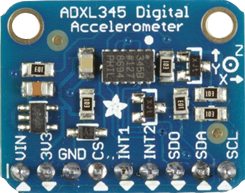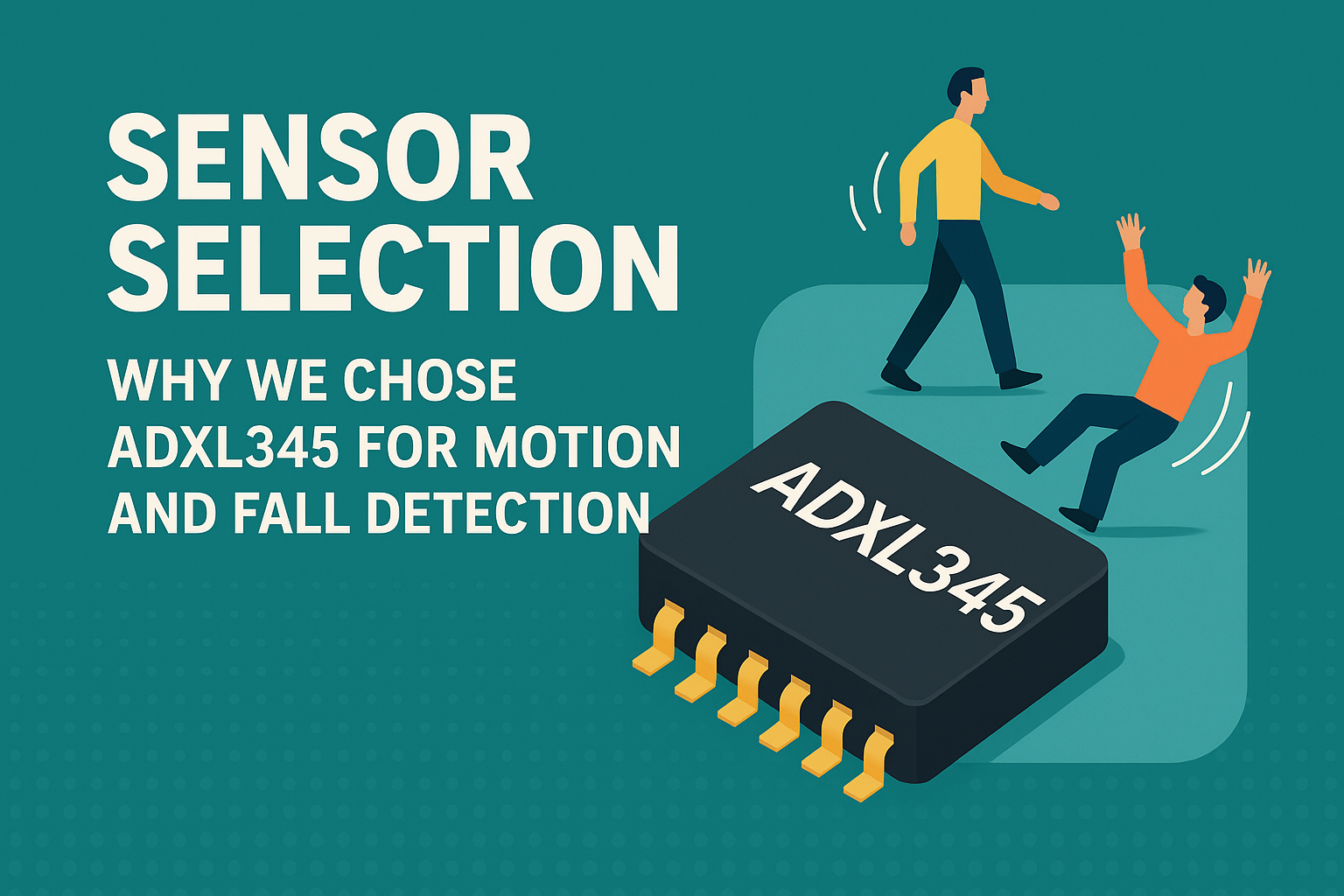As we develop the Dynamic Emergency Monitoring System (DEMS), selecting the right sensors for patient monitoring is crucial. In addition to vital sign tracking, motion analysis plays a key role in detecting critical events such as falls, sudden movements, or patient distress. For this purpose, we have chosen the ADXL345, a highly efficient 3-axis accelerometer that offers precise motion tracking while maintaining low power consumption—a critical feature for our wearable monitoring system.
Why the ADXL345?
The ADXL345 is a digital accelerometer designed for motion sensing applications. It provides high-resolution (13-bit) data, allowing detailed movement analysis while consuming minimal power. Here’s why it is the ideal choice for our system:
Fall Detection and Patient Activity Monitoring
Falls are a major concern in emergency and hospital environments, especially for elderly or high-risk patients. The ADXL345 enables real-time fall detection by identifying:
- Sudden accelerations followed by impact, characteristic of a fall.
- Unusual movement patterns that may indicate a patient in distress.
- Periods of inactivity after a fall, which can trigger alerts for medical intervention.
Low Power Consumption for Wearable Devices
Since our wearable monitoring devices are designed for extended use, battery efficiency is a top priority. The ADXL345 supports low-power operation modes, allowing the device to remain active without draining battery life. This ensures that our system can provide continuous monitoring for hours without frequent recharges.
High Sensitivity and Configurable Data Rates
The ADXL345 provides precise motion data with an adjustable range of ±2g, ±4g, ±8g, or ±16g, making it suitable for detecting both small patient movements and significant impacts (such as falls). The adjustable data rate allows us to optimize power consumption based on the required motion sensitivity, ensuring a balance between performance and efficiency.
Easy Integration with Microcontrollers and Wireless Systems
The ADXL345 communicates via I2C or SPI, making it compatible with microcontrollers like the XIAO ESP32C3, which we are using in our system. This allows:
- Efficient preprocessing of motion data using edge computing, reducing the amount of raw data transmitted.
- Wireless transmission of fall alerts to hospital systems via Wi-Fi/Bluetooth, ensuring immediate response from healthcare professionals.
- Seamless integration with other biometric sensors, such as the MAX30102 (heart rate & SpO₂ sensor), to correlate motion data with vital signs.
Embedded Motion Processing for Smarter Data Handling
The ADXL345 includes built-in motion detection features, such as:
- Tap and double-tap detection, useful for patient interaction (e.g., tapping the device to request assistance).
- Free-fall detection, which can trigger emergency alerts when a patient collapses.
- • Inactivity detection, helping identify unconsciousness or extended immobility after an incident.
These features allow efficient data processing at the edge, reducing unnecessary data transmission and optimizing system performance.
How the ADXL345 Fits into Our System
In the Dynamic Emergency Monitoring System (DEMS), the ADXL345 accelerometer plays a critical role in motion tracking and emergency detection, detecting sudden movements and falls using real-time acceleration data.
Conclusion
The ADXL345 accelerometer is an essential component of our wearable emergency monitoring system, providing real-time motion tracking, fall detection, and activity monitoring. Its low power consumption, high sensitivity, and built-in motion processing features make it an ideal choice for patient safety applications.
By integrating the ADXL345 with edge computing and wireless communication, our system ensures continuous monitoring, rapid fall detection, and immediate medical alerts, ultimately improving patient outcomes in emergency settings. As we move forward with prototype development and testing, this sensor will play a key role in making our intelligent healthcare solution both effective and reliable.

